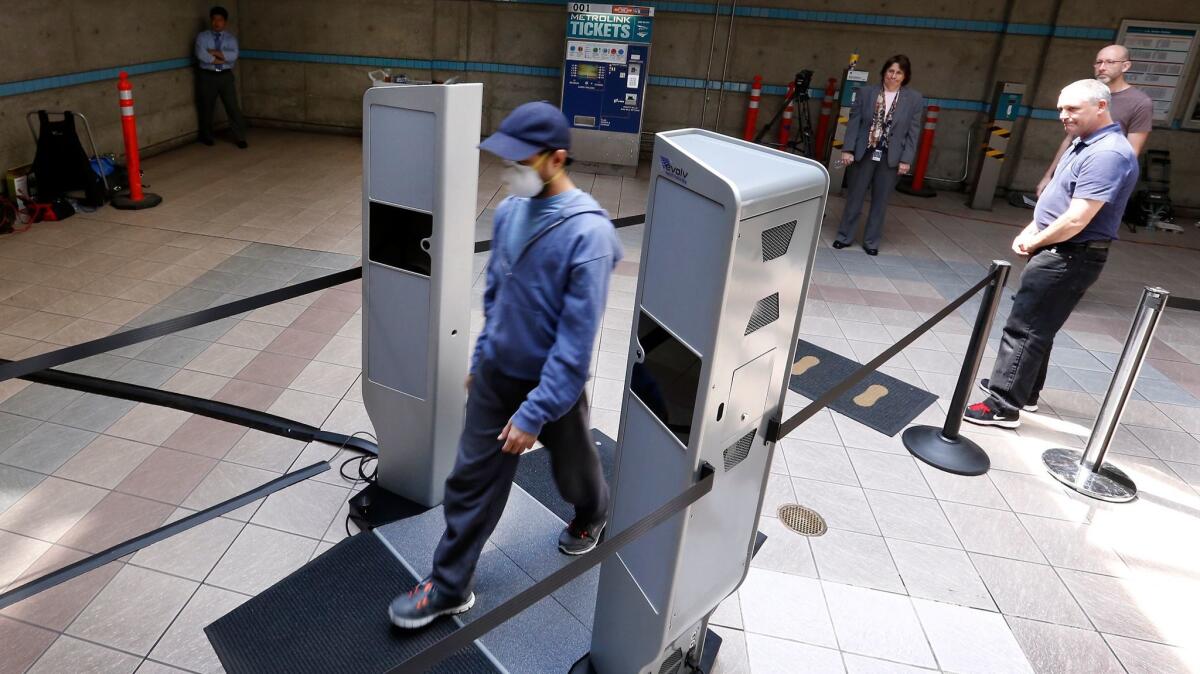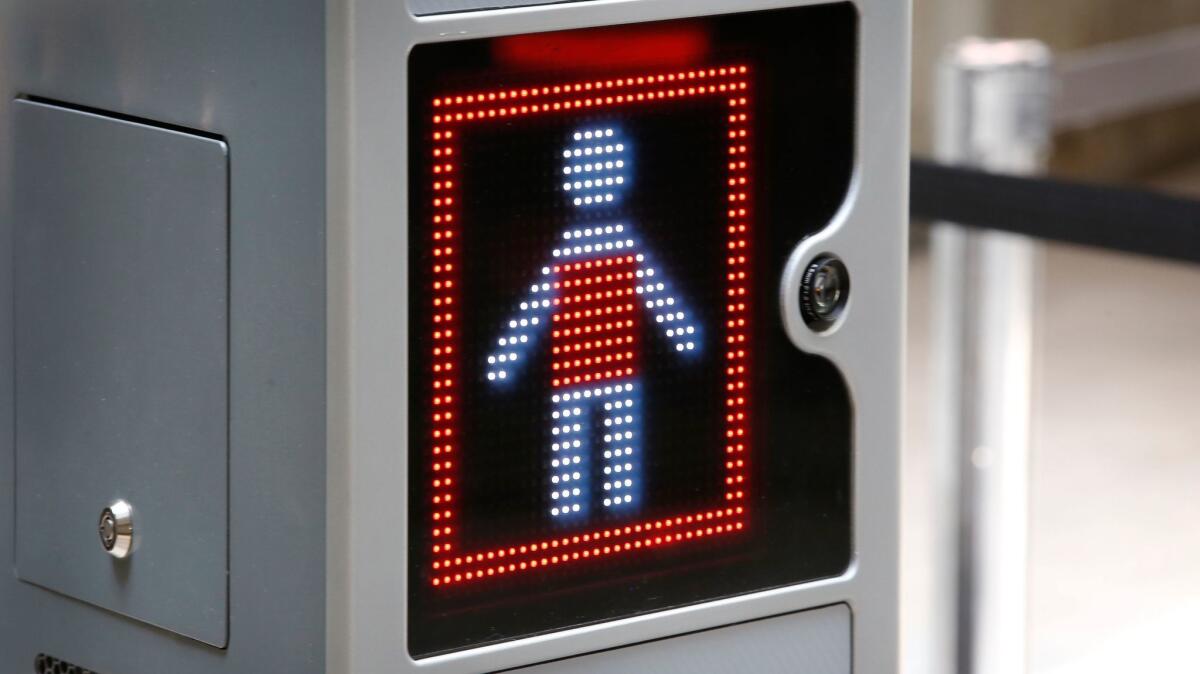Metro tests airport-style body scanners aimed at detecting guns and explosives

- Share via
Commuters hurrying through Union Station toward their Metro trains Wednesday morning encountered a new obstacle near the entrance to the subway: an airport-style body scanner, designed to detect hidden weapons and explosives.
As passengers walked between two tall silver columns, short-wave radio frequencies scanned their bodies and sent the data to a computer system that searched for patterns that suggest a hidden rifle or explosives vest.
The test, which is optional for passengers, will continue through Thursday. The test run is part of a broader Metropolitan Transportation Authority effort to find technology that could deter or detect possible public safety threats.
“While we’ll never become a fully secured environment like you’d have in the airport, we do want to find a way to more effectively screen passengers,” Metro security executive Alex Wiggins said. “We are trying to stay ahead of the threat.”

Despite officials’ fears that subways or stations could be attacked, body scanners and metal detectors are not common on U.S. rail systems, in part because the technology has not traditionally worked fast enough to process thousands of passengers rushing to catch trains.
But the portable device being tested this week works much faster, scanning up to 600 passengers per hour, officials said. Riders can keep their shoes on and leave their laptops, keys and phones in their bags.
Still, 10 people a minute is still a fraction of the capacity needed to accommodate rush-hour crowds in the system’s busiest stations. Metro’s subway has about 150,000 daily riders.
After the test ends, Metro will analyze the accuracy of the results before deciding whether to buy any of the scanners. The devices cost about $60,000 each, and Metro would need to buy and install about 20 for Union Station alone, Wiggins said.
The technology would likely be held in reserve for days when security officials suspect a heightened risk of attack, Wiggins said. Backpacks, briefcases and luggage would probably still need to be searched by hand.
The scanner being tested in L.A. has also undergone tests in Washington, D.C., and Denver, and at London’s Heathrow Airport, officials said.
The device does have facial recognition technology, which can prompt privacy concerns. Los Angeles officials did not turn that feature on, Wiggins said, and he said he had lingering questions about whether the technology worked well enough to be relied upon.
Metro officials couldn’t say yet whether the device found any hidden explosives or firearms. Wednesday’s tests were optional, Wiggins said, and “folks that wanted to participate probably weren’t carrying any weapons.”
Twitter: @laura_nelson
More to Read
Sign up for Essential California
The most important California stories and recommendations in your inbox every morning.
You may occasionally receive promotional content from the Los Angeles Times.











